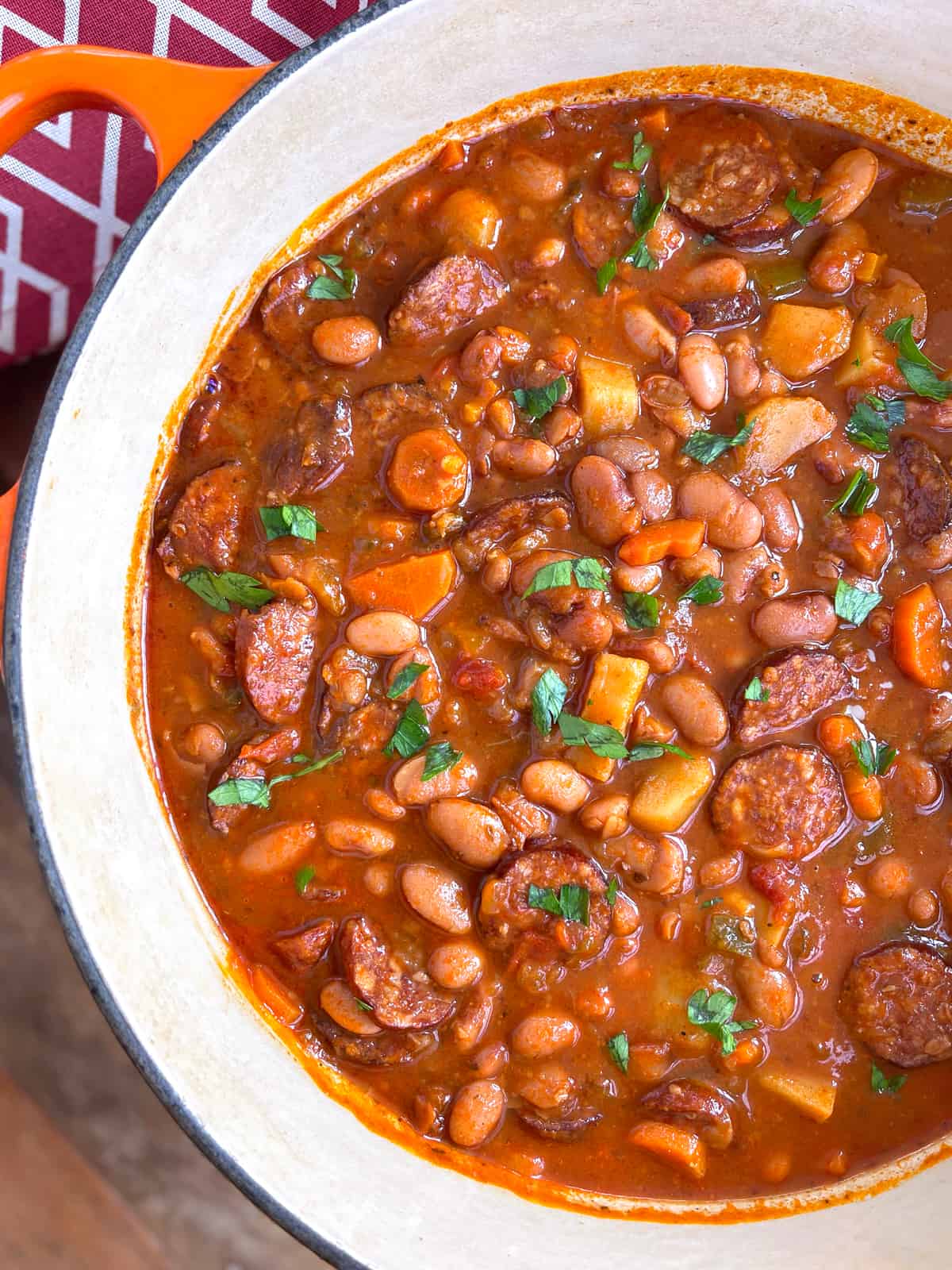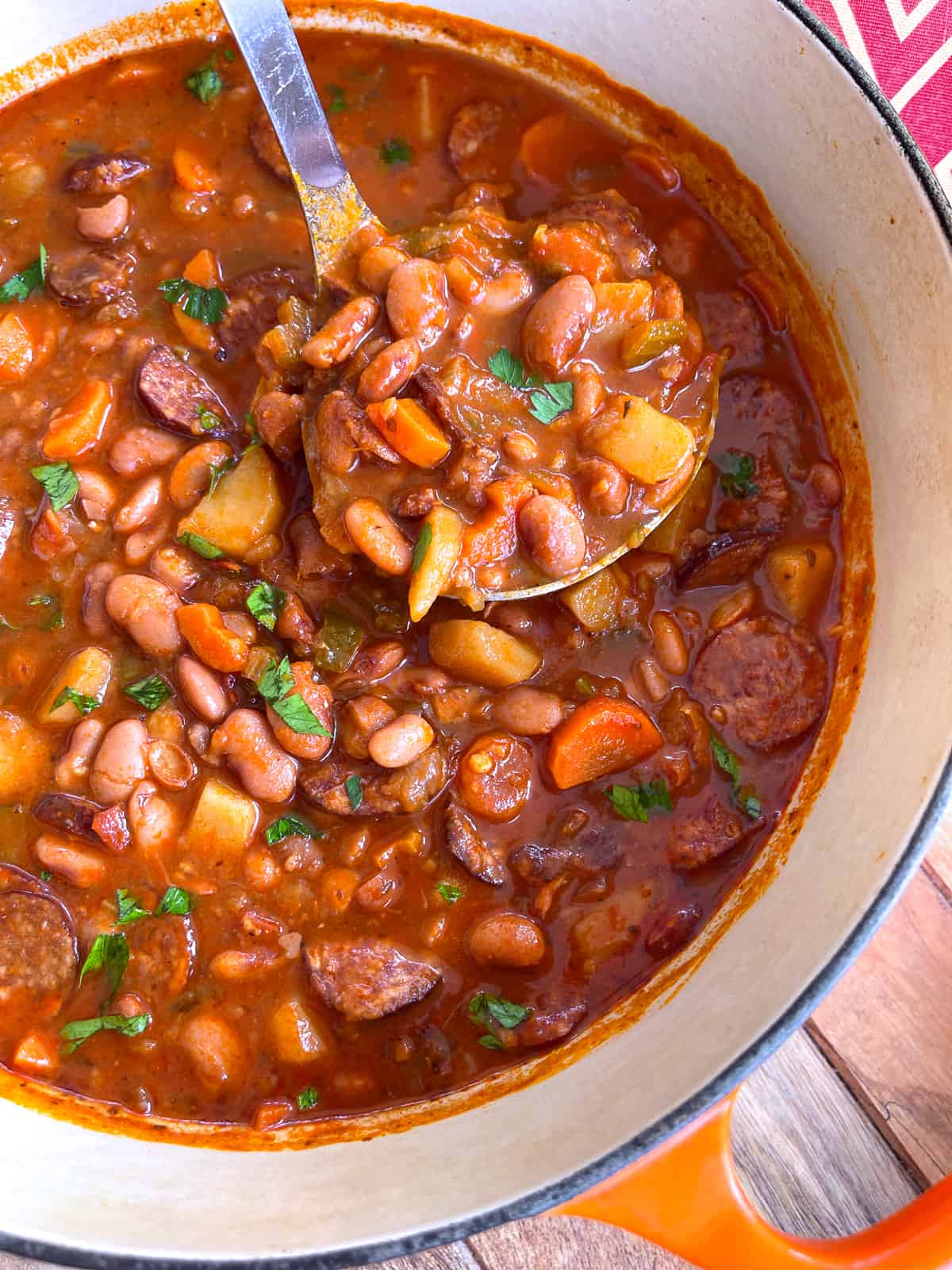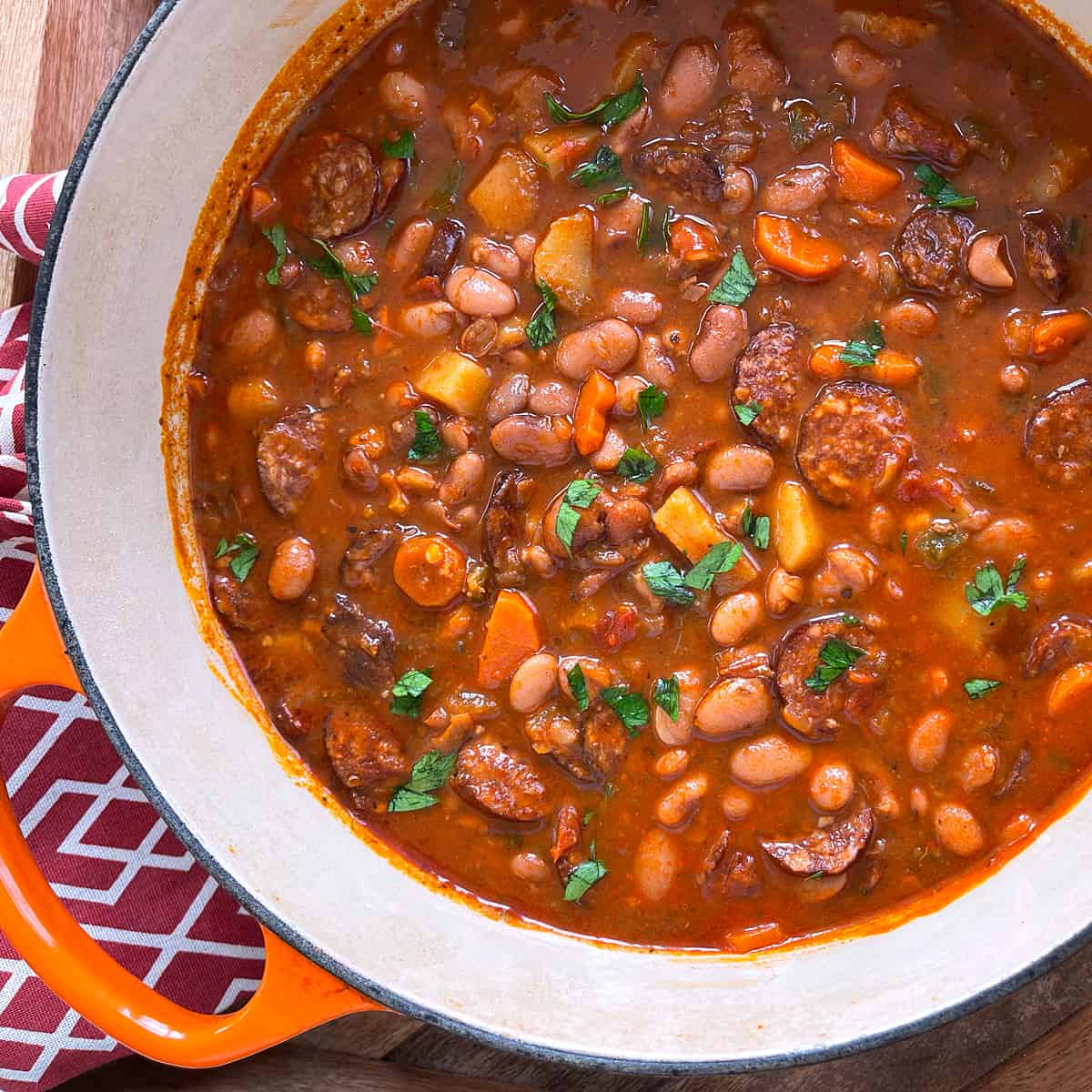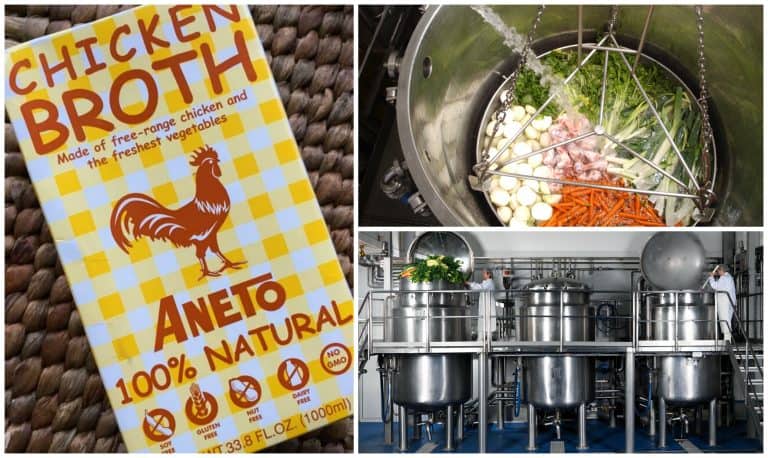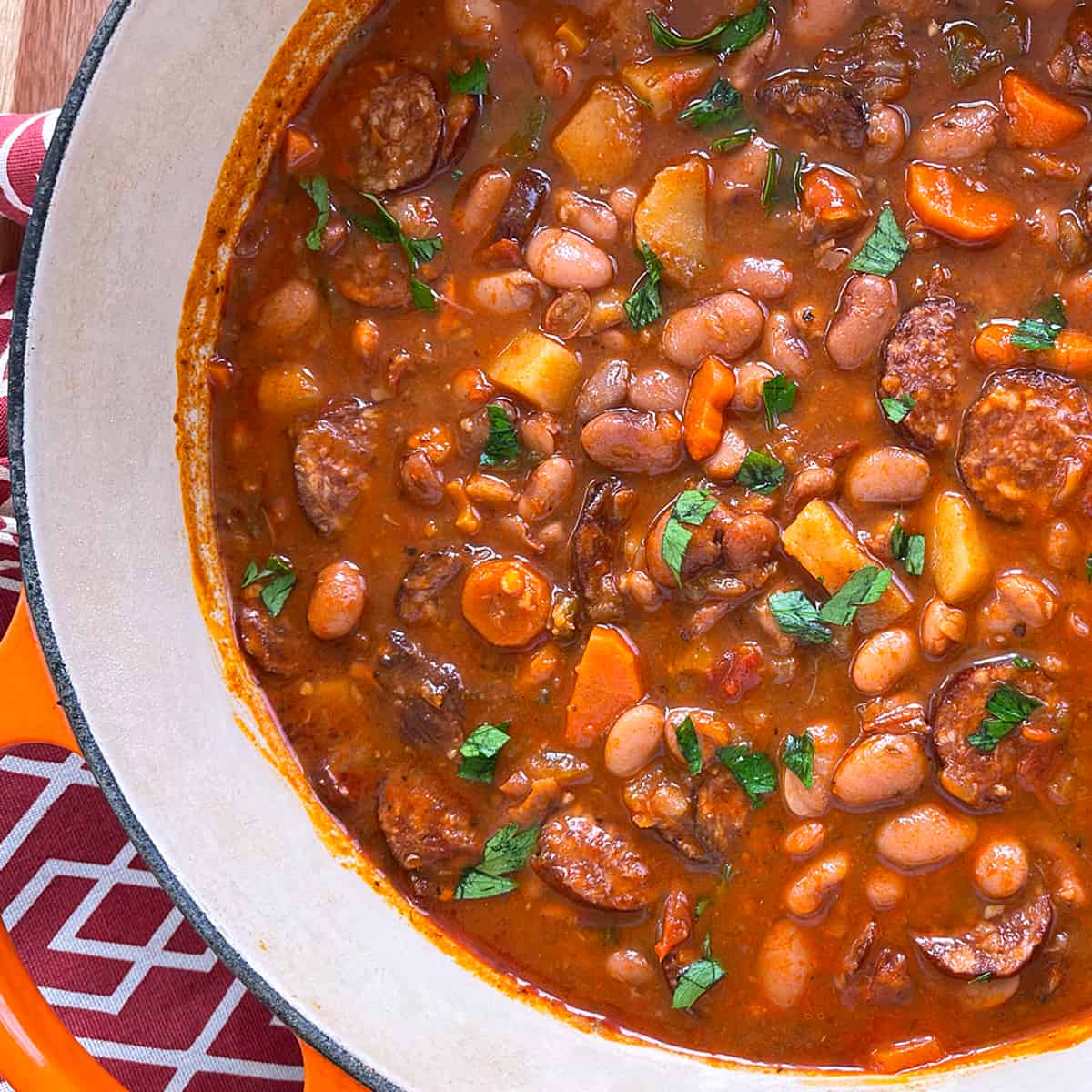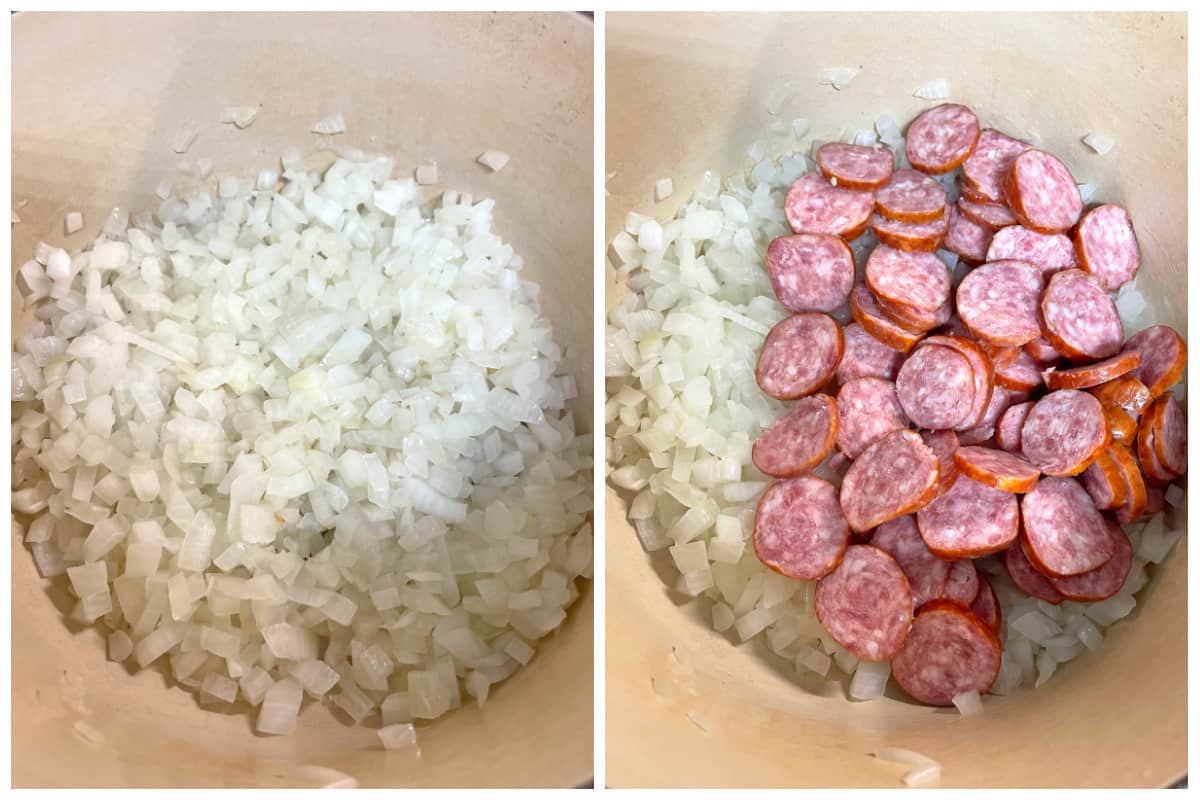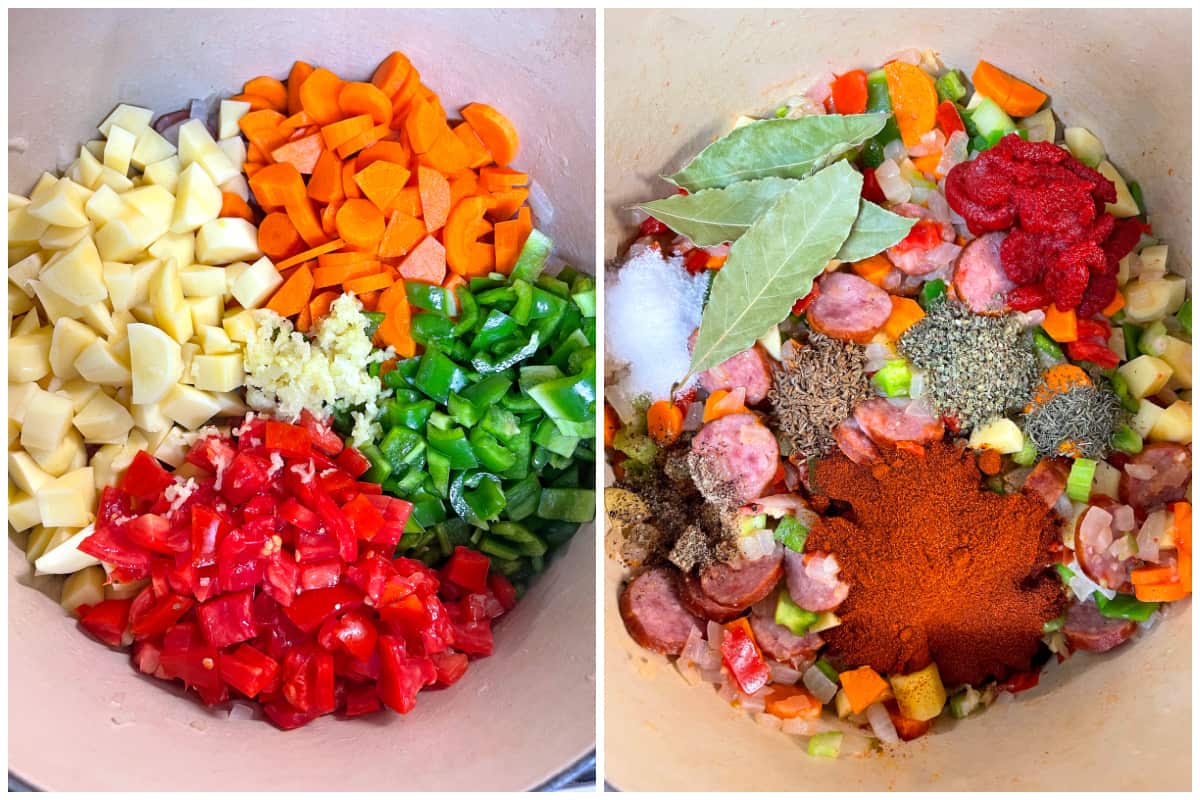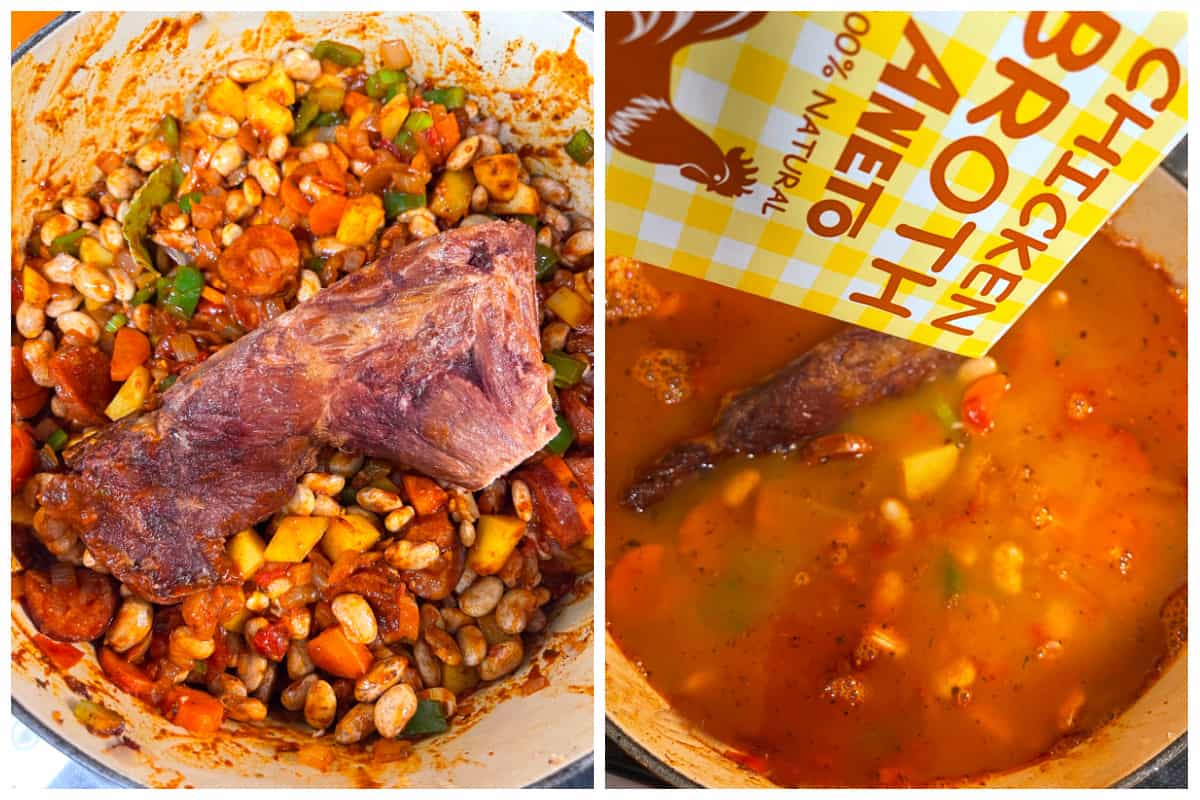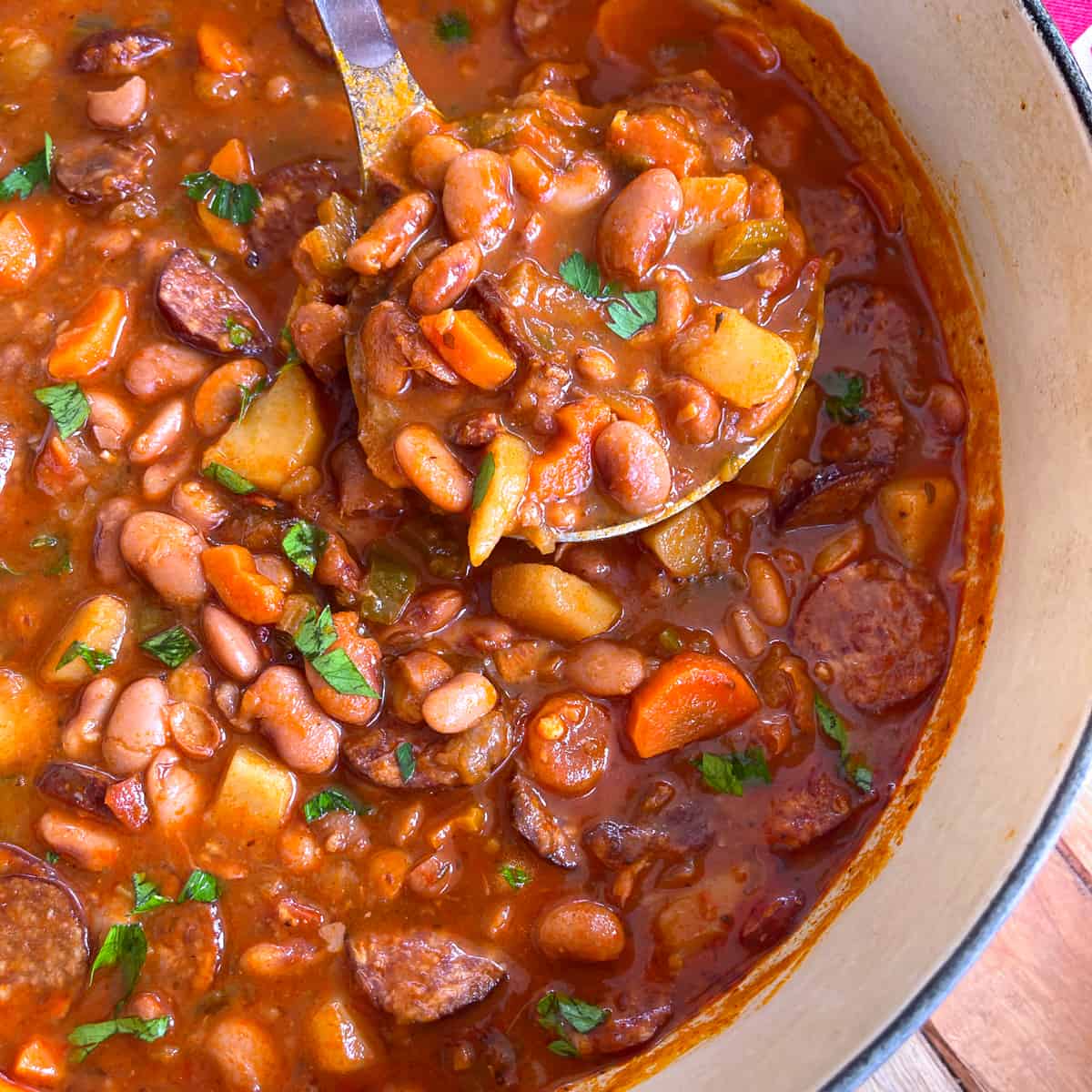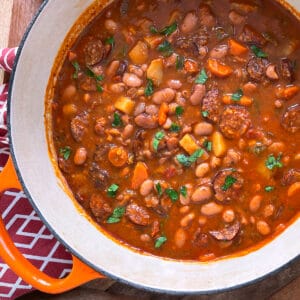A traditional Hungarian dish of hearty beans, savory smoked sausage, and wholesome vegetables in a rich paprika-infused broth, this Babgulyas will transport you to a place of warmth and nostalgia with every flavorful spoonful! This Hungarian bean goulash recipe is sure to win a place among your rotation of favorite stews – it’s Hungarian comfort food at its best! Be sure to also try our other gulyas recipes including the traditional beef Hungarian Goulash, Chicken Goulash, and Szegedin Goulash! Sitting down to a bowl of hot stew on a cool evening is an experience we all know how to savor. It’s a sensory journey that engages not only the taste buds but also evokes an overall feeling of comfort and contentment with memories of home-cooked meals, family gatherings, and cozy evenings spent in good company. This traditional Hungarian bean goulash, or Babgulyás, will forever bring back memories of my travels to Hungary and enjoying dinner with friends over a bubbling pot of this wonderful soul-satisfying stew, communicating through broken bits of English and Hungarian and sharing the universal language of laughter.
What is Babgulyás?
Babgulyas is Hungarian for bean stew. But contrary to what its name implies, it is not a vegetarian dish. Unlike traditional Hungarian Goulash (Gulyas) which is primarily beef-based with vegetables, the primary protein in Babgulyas are beans with the meat being secondary and added for flavoring. Commonly a flavorful smoked sausage, such as kolbasz, is added along with whatever else the cook may have on hand, like some meaty beef or pork bones and/or smoked ham hocks. Often a combination of these is used. It reminds me of Feijoada, the national dish of Brazil, which is a black bean stew flavored with a variety of smoked meats. This dish was introduced to us by a lovely elderly woman in the rural outskirts of Szombathely, located in the western part Hungary near the Austrian border. Babgulyas is an old school dish that you’re more likely to find throughout the small rural villages of Hungary. And while I know cooks in the city who make it at home, I have yet to encounter it on a restaurant menu in Budapest. Babgulyas is one of those traditional dishes that is very much centered around hearth and home and every family has its own way of making it.
Ingredients in Hungarian Bean Goulash
A relatively inexpensive dish to make, its focus is beans and you can use one variety of a combination (pinto beans, kidney beans, black beans, navy beans, borlotti beans, cannellini beans, etc). If you have access to Hungarian kolbász (lucky you!) use it, otherwise choose a flavorful smoked sausage like kielbasa. In addition you can use either a smoked ham hock or smoked neck bones for added flavor. Celeriac is traditional in Hungary, less so celery stalk though you can use either. Other common vegetables include carrots, peppers, tomatoes, turnips, and potatoes. For the paprika, for the absolute best results I always recommend genuine imported Hungarian paprika. It makes ALL the difference in flavor. Do not use paprika labeled “hot” unless you like things fiery and “smoked” paprika is not used in Hungarian cuisine (it’s Spanish). The inclusion of caraway is regional and though I think it adds a really nice flavor component, you can omit it if you like. While you can use water to make this, I prefer to use broth as it makes the goulash far more flavorful. For this Hungarian bean goulash I’m using my favorite 100% natural chicken broth from the generous sponsors of this post, Aneto Broth, a broth manufacturer based outside of Barcelona, Spain. We toured their factory several years ago, watching the entire behind-the-scenes process from start to finish, and we have been devout fans ever since. It was such an inspiration to see a company that makes broth the same way we do right at home, with a recipe using real ingredients. They put the freshest, locally-sourced chicken and vegetables into gigantic 800 gallon kettles and let the ingredients slow simmer for 3+ hours. It was incredible to watch!
Serving Recommendations
Babgulyas is a classic one-pot dish that needs nothing further than some good crusty bread to round it off. Another option is to serve it with nokedli, the Hungarian version of Spätzle which is virtually identical. And of course in Hungary you will never go wrong serving a savory stew with a refreshing side of Cucumber Salad.
Can Bean Goulash Be Made in Advance?
It sure can, in fact I highly encourage it! As with most stews, the flavor only gets better with time and so if you can muster the patience to wait you will be well rewarded. This Hungarian bean goulash will keep in the fridge for up to 5 days.
Can This Be Frozen?
Yes! Bean goulash freezes well and it’s one of those dishes I like to double or even triple to have on hand for quick, convenient meals. Let it thaw overnight in the fridge and then reheat in the microwave or on the stovetop.
Bean Goulash Recipe
Let’s get started! Lard is traditional and bacon grease makes an excellent and flavorful substitute, but you can also use oil. Heat the lard, bacon grease or oil in a heavy pot or Dutch oven and cook the onions until soft and translucent, 5-7 minutes. Add the smoked sausage and cook for another 3-4 minutes. Add the veggies and garlic and cook for another 5 minutes. Add the tomato paste and seasonings. Stir to combine and cook for another minute or two. Add the beans and stir to combine. Add the smoked ham hock or smoked neck bones to the pot. Add the chicken broth. Bring everything to a boil, reduce the heat to low, cover, and simmer for 90-120 minutes. If using a smoked ham hock, shred the meat off the bone and return the meat to the pot. Serve as is or with some crusty bread, or ladled over Spätzle if you’d like some more bulk, and/or with a green salad or cucumber salad. If you like you can serve the babgulyas with a dollop of sour cream. Enjoy!
For more traditional Hungarian recipes be sure to try our:
Hungarian Goulash Chicken Paprikash Pörkölt Szegedin Goulash Chicken Goulash
A special thank you to Aneto Broth for sponsoring this post! As always, all opinions are 100% my own. Read more about me…
